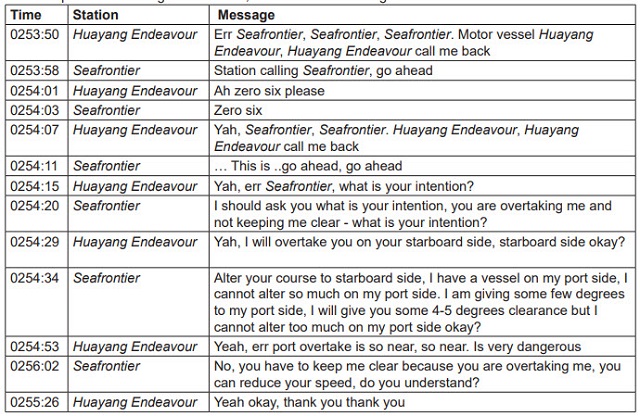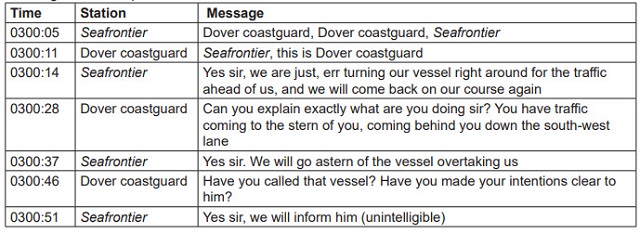Fatigue Implicated in Overtaking Incident
The U.K. Marine Accident Investigation Branch has released its report on the collision between two Hong Kong registered vessels, Huayang Endeavour and Seafrontier, in the Dover Strait in July 2017.
Both vessels, a bulk carrier and a tanker, sustained damage but the accident did not result in any injuries or pollution.
The investigation identified that a VHF radio conversation between the two vessels had resulted in the two bridge teams holding conflicting views as to what had been agreed regarding Huayang Endeavour overtaking Seafrontier. Subsequently, Seafrontier’s bridge team did not check for sea room astern before altering course, leading to a close quarter situation between the two vessels.

In addition, Seafrontier’s master had been present on the bridge for over 14 hours and was probably suffering from fatigue, which was likely to have had an adverse effect on his decision making.

Safety lessons
Seafrontier’s master was operating within his maximum permitted working hours. However he was probably experiencing fatigue which resulted in his decision making and reaction times being affected.
Huayang Endeavour’s bridge team did not complete effective long-range scanning as required by the COLREGs.
The use of VHF to resolve the situation was inappropriate as it did not allow sufficient time for effective action to be take, the language used was not precise or clear and it did not result in a shared plan.
Seafrontier’s bridge team did not monitor Huayang Endeavour’s maneuveres after the VHF conversation and as they did not check for sea room before altering course, were unaware of the bulk carriers actual position.
Recommendations
Following its internal investigation Huayang Endeavour’s manager has amended its procedures for the use of VHF for collision avoidance and promulgated the lessons learned from this accident to its fleet. The manager of Seafrontier has also completed an internal investigation and has taken a number of steps to train its personnel in bridge and crew resource management, review its procedures and promulgated the lessons from this accident to its fleet.
The report is available here.
